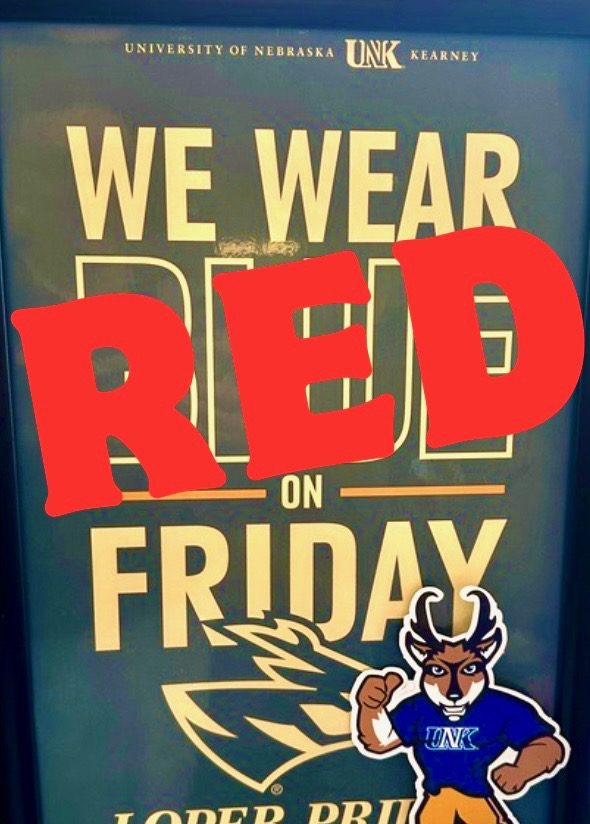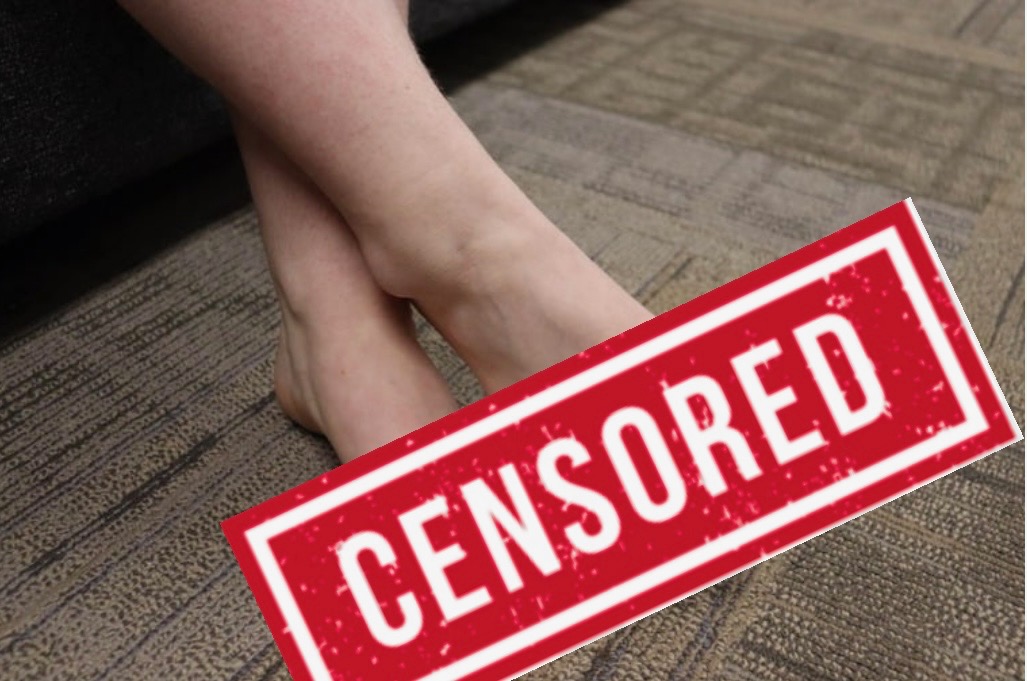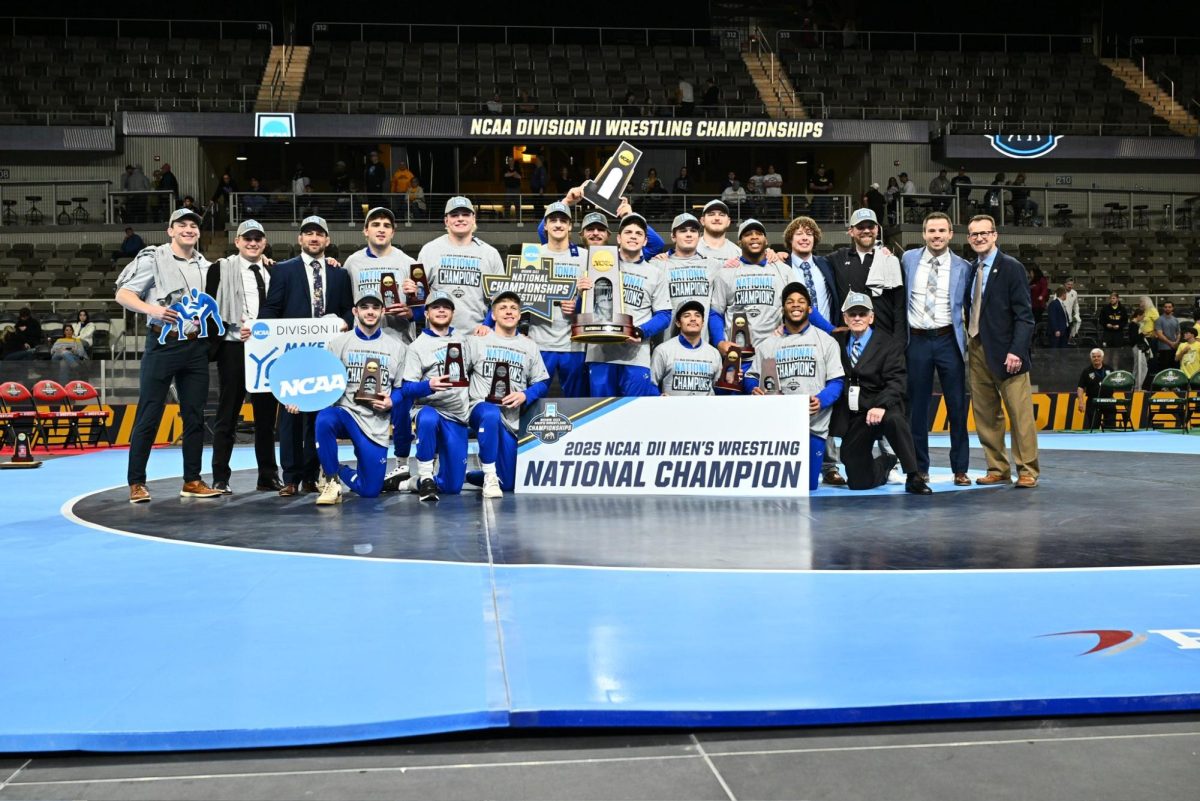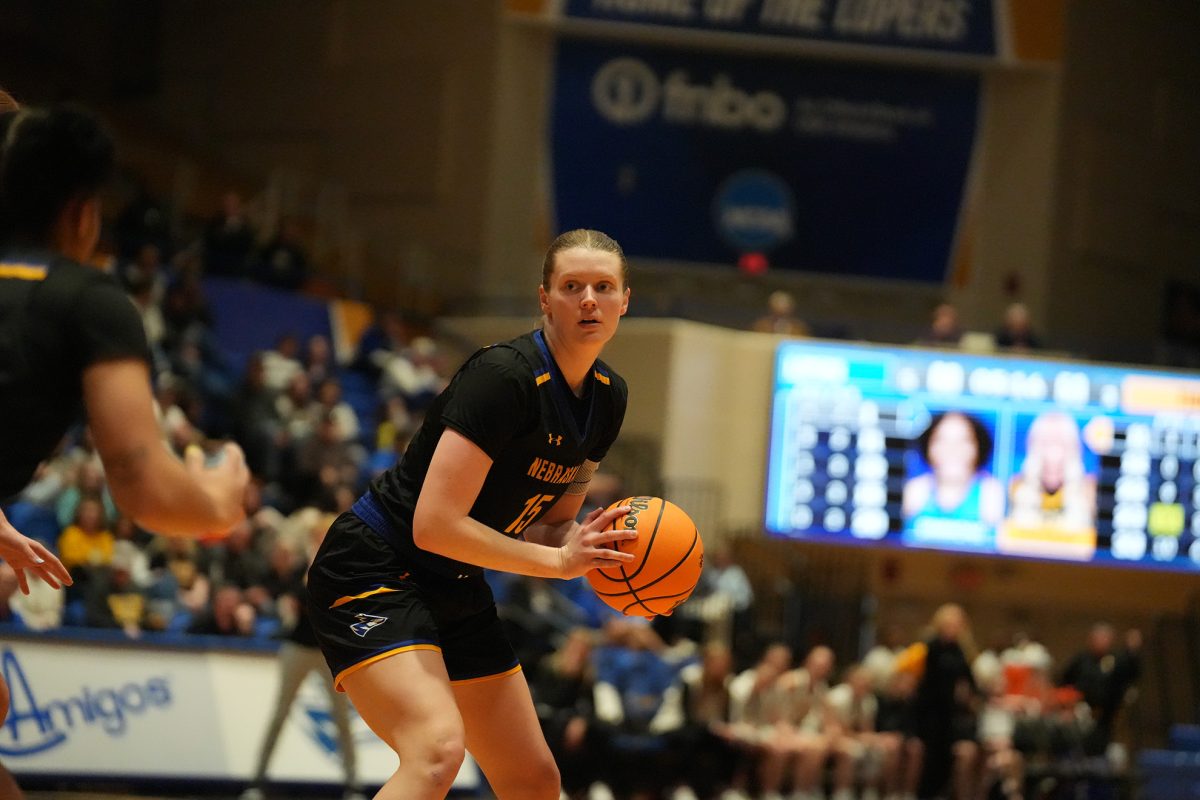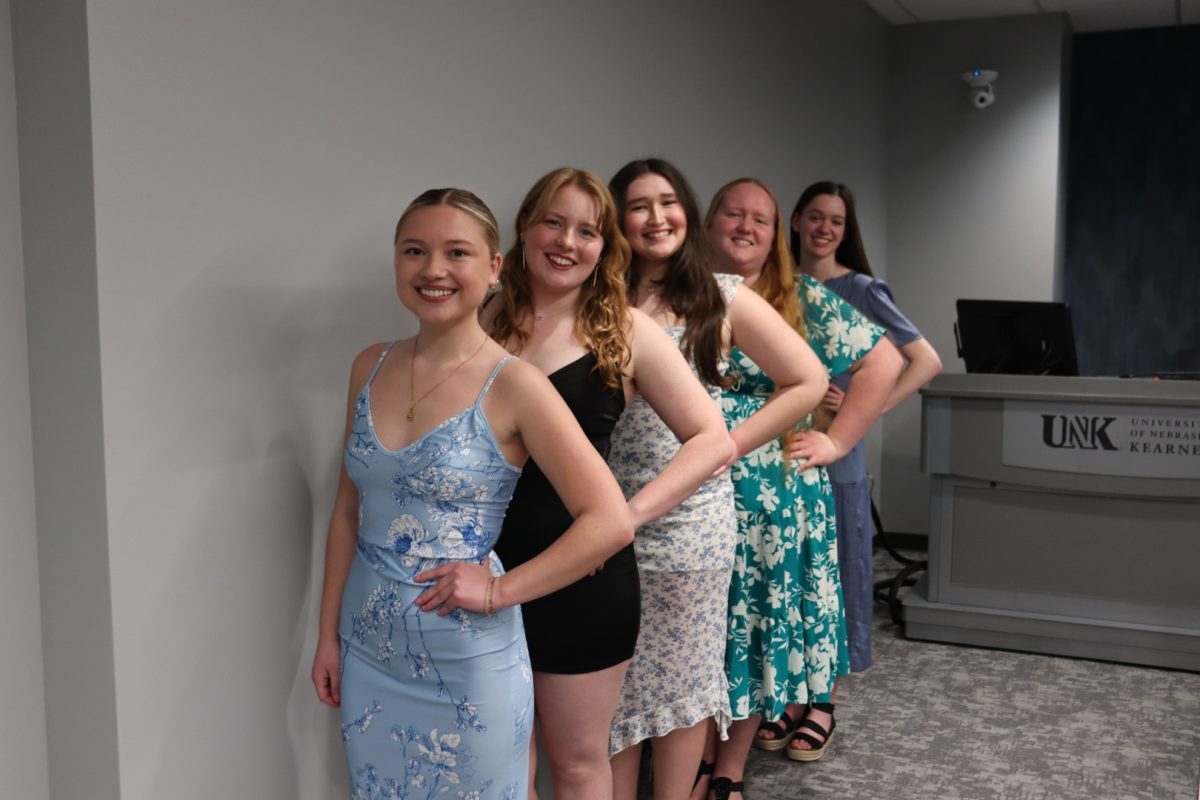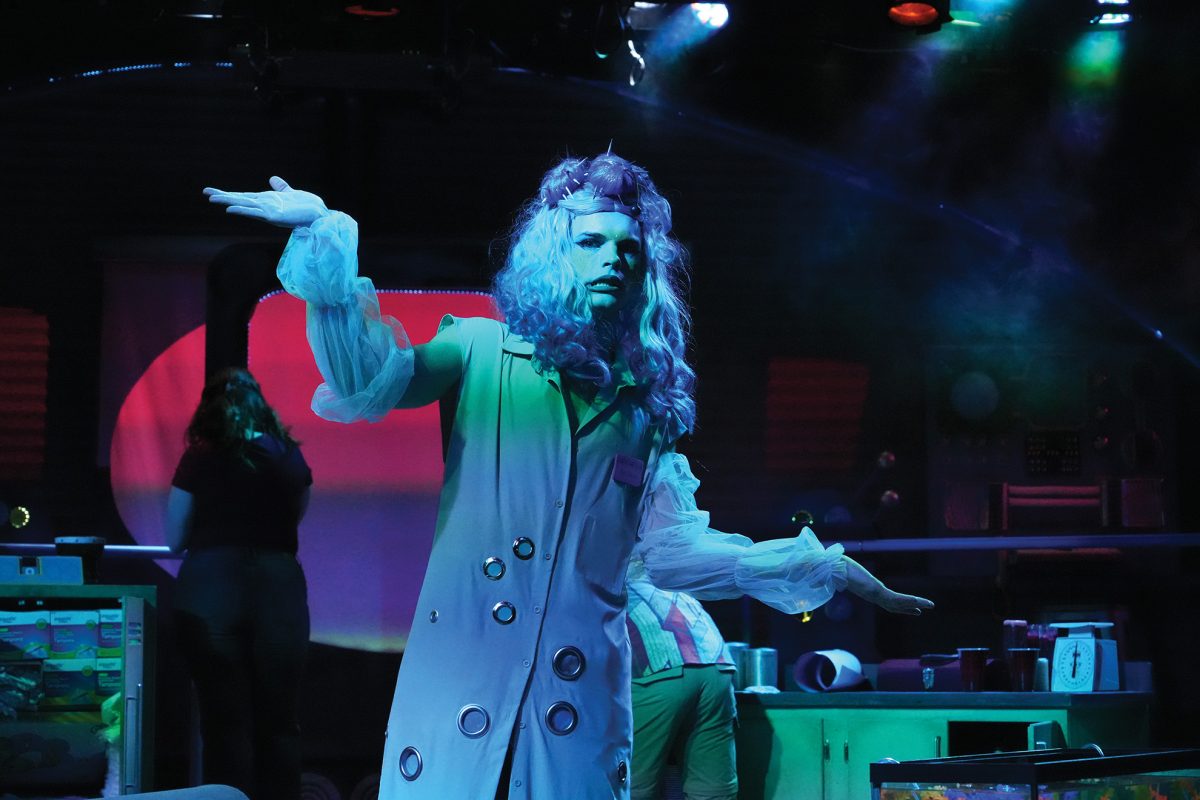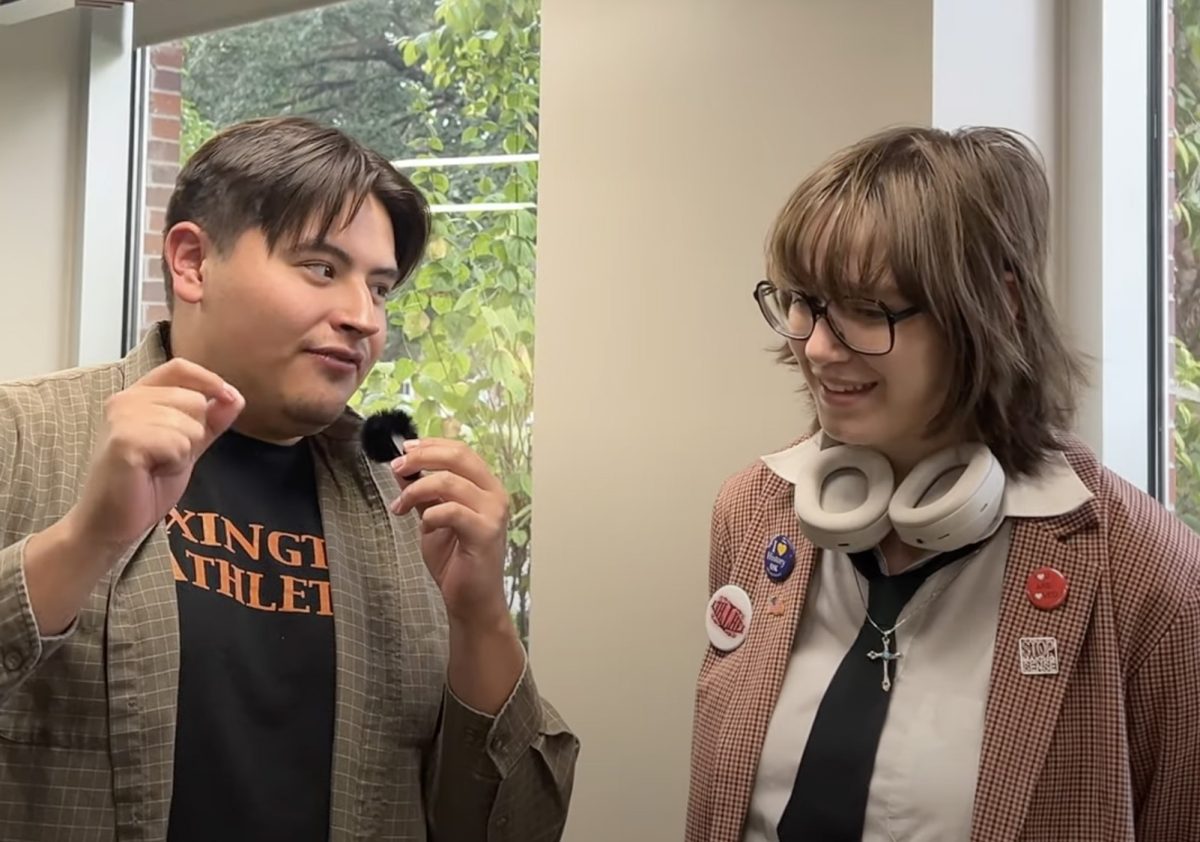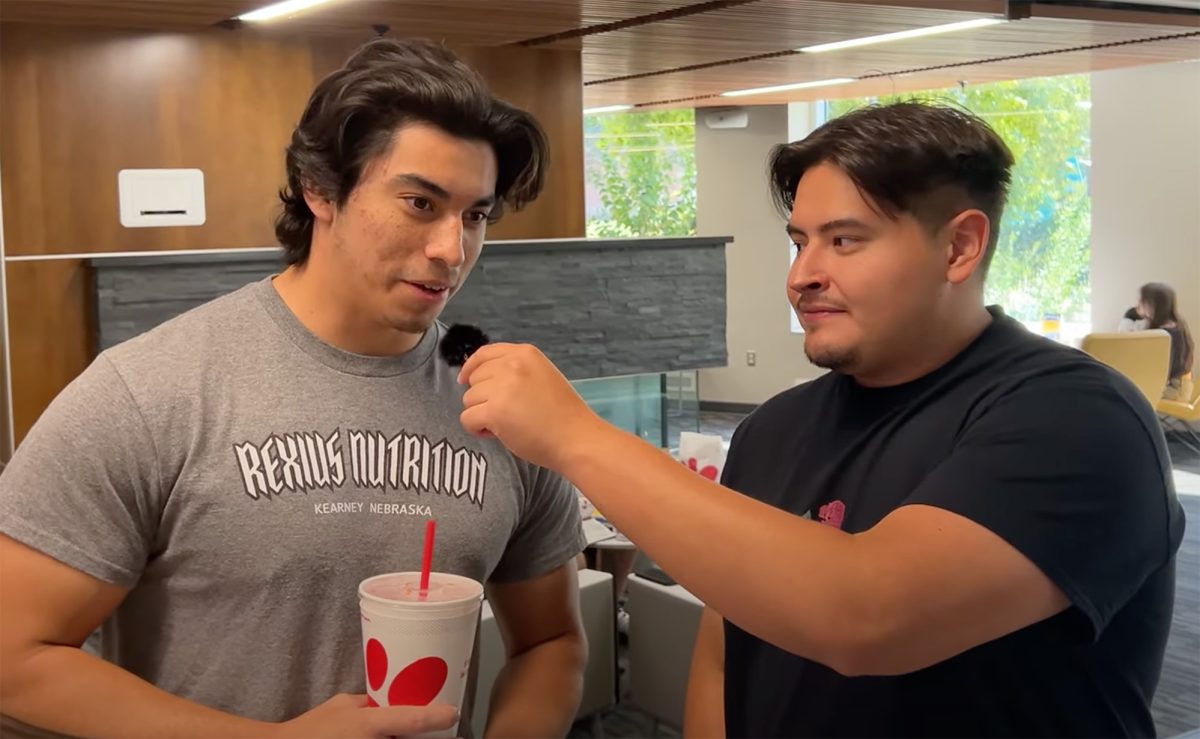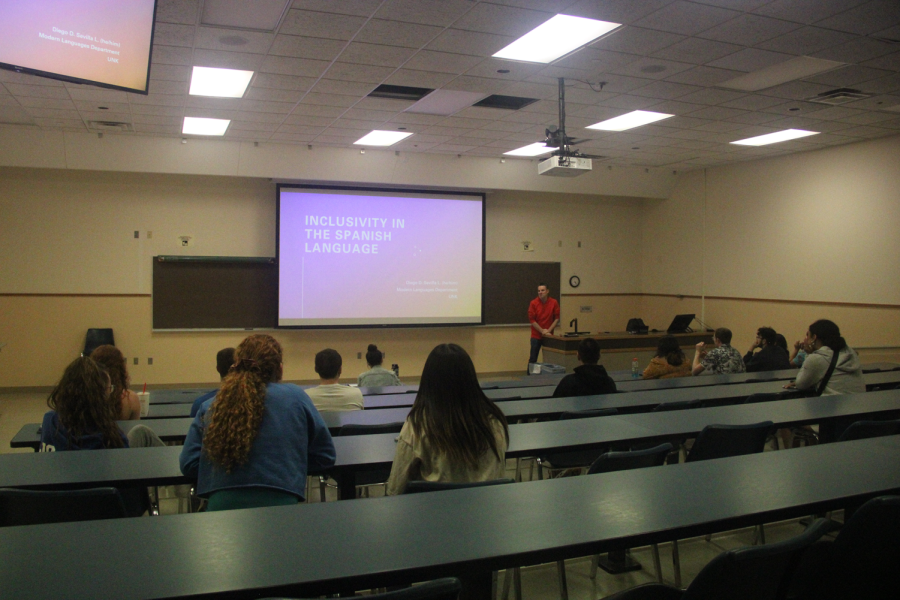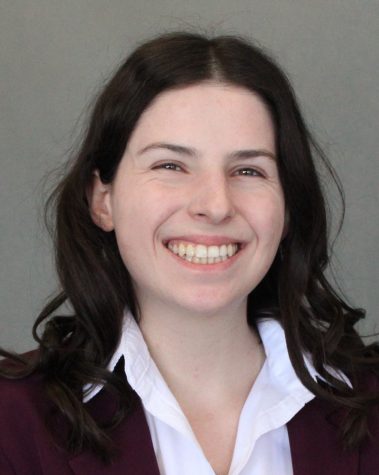Modern Languages enters trial runs with inclusivity class
Spanish language presenter approaches the topic of gender. Photo by Shelby Burglund / Antelope Staff
May 17, 2023
“Are you all Mainiacs?” This is what Diego Sevilla, a UNK Spanish lecturer, asked the audience during his presentation on Inclusivity in the Spanish language. He continued, saying “Are you offended by my question? Do you mind if I start addressing you as maniacs? Is that a bad thing?” The confusion amongst students faded after Sevilla explained that the word “Mainiac” (or “Maineiac”) is a word that addresses people who are from Maine.
Sevilla asked this question to highlight how people feel when their identity or pronouns are incorrectly used to address them.
“So, you understand my point, right?” Sevilla said. “We don’t want to do that any time. Nonbinary people have exactly the same rights as everyone else. And those are human rights.”
This talk was held by the UNK Spanish Club to inform students about the changes happening in the Spanish language to be more inclusive of others. According to the Instagram post made by the Spanish Club, it aimed to teach students how to express themselves regarding the LGBTQ+ community and general inclusivity.
The main lesson of the talk was about how the default (masculine) and feminine markers of Spanish words are being changed to accommodate people with different genders. Sevilla said Spanish is unlike the English language since gender is shown in most Spanish nouns, adjectives and articles. The solution being proposed is to use “@” or “x” at the endings of written Spanish words to eliminate masculinity or femininity when referring to mixed groups or groups that might have a non-binary person. The more recent development is to use “e” instead, in both written and spoken Spanish words.
An example of this would be “la enfermera”, which is a feminine word that translates to “a nurse.” Yet, this word is commonly perceived as addressing only women. By changing the article from “la” to “le” and replacing the “a” with “e”, the word can be used to address anybody.
Student body president Temo Molina said it benefits everyone to be inclusive, whether they’re in or outside the binary.
“Some people will say there’s no possible way to address people outside of binary, and there is,” Molina said. “There are ways to make people included, and I think it’s a really good opportunity for us and Kearney.”
According to Lucía Benavides in her article “Royal Spanish Academy Dismisses Movement…”, the gender inclusive “e” ending is increasingly being used in Spanish-speaking countries like Chile, Mexico, Spain and Puerto Rico.
Despite these progressions, Sevilla said the inclusive language is receiving backlash from others — including some of Sevilla’s friends from Ecuador.
“My friend asked me, ‘Why the hell are you talking like that?’” Sevilla said. “I don’t see Ecuador accepting the inclusive language any time soon; Probably countries like Argentina might lead the change. It depends on the country.”
While the inclusive language may be rejected by some institutions, UNK is working to create a regular class around inclusive language. Sevilla went to the chair of the Modern Languages Department and suggested teaching the class: his idea was accepted. The class FORL-499: Independent Studies in Foreign Language was adapted for this spring to have the title “Inclusive and Neutral Language in Spanish.” Sevilla taught the class for the first time and hopes for the class to be offered next spring as well.
Steph Gonzalez Guerrero, vice president of the UNK Spanish Club, said the class is a huge step for UNK.
“Being inclusive is something that will eventually be a norm in classes like these,” Guerrero said. “I think the professors in modern languages have taken amazing steps to make sure their students are well rounded.”



